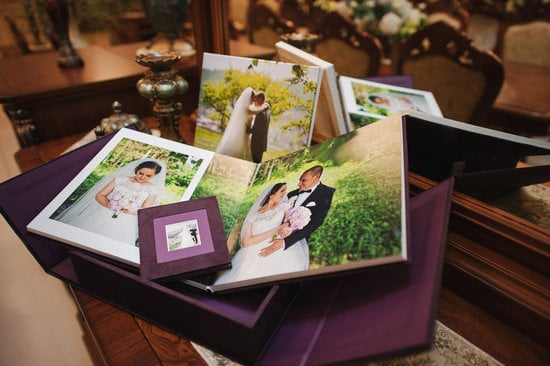Are you interested in learning how to become a wedding calligrapher? Wedding calligraphy is a beautiful art form that adds a touch of elegance and sophistication to any special occasion. From designing elegant invitations to creating stunning place cards, wedding calligraphers play an essential role in making weddings truly memorable.
Calligraphy, derived from the Greek words “kallos,” meaning beauty, and “graphein,” meaning to write, is the art of beautiful handwriting. It requires patience, precision, and a keen eye for detail. As a wedding calligrapher, your work will not only enhance the aesthetic appeal of wedding stationery but also set the tone for the entire event.
To become a successful wedding calligrapher, you must first understand the fundamentals of calligraphy and practice regularly to hone your skills. Investing in quality tools such as nibs, ink, and paper is essential for producing professional-quality work. Additionally, building a strong portfolio and effectively marketing yourself to potential clients are key steps towards establishing yourself in the competitive wedding industry. Stay tuned for valuable insights on how to develop your calligraphy skills and thrive as a wedding calligrapher.
Understanding the Art of Calligraphy
Calligraphy is more than just elegant handwriting; it is an art form that requires patience, precision, and practice. To become a successful wedding calligrapher, one must first understand the basics of calligraphy. This includes learning about different styles such as Copperplate, Spencerian, Italic, and Modern Calligraphy. Each style has its own unique characteristics and techniques that contribute to the overall aesthetics of the writing.
It is essential for aspiring wedding calligraphers to invest time in studying the history and fundamentals of calligraphy before jumping into creating pieces for weddings. Understanding how different strokes are created, how spacing affects readability, and how to maintain consistency throughout a piece are all crucial aspects of mastering this art form. Additionally, learning about proper posture, hand positioning, and ink flow can greatly improve the quality of your work.
One practical way to enhance your understanding of calligraphy is by taking classes or workshops either in person or online. These resources can provide valuable insights into technique, style development, and troubleshooting common issues. By dedicating yourself to learning and practicing regularly, you can develop a strong foundation in calligraphy that will serve you well as you navigate the world of wedding stationery design.
| Calligraphy Style | Description |
|---|---|
| Copperplate | An elegant script style characterized by thin upstrokes and thick downstrokes. |
| Italic | A slanted style with distinct serifs and fluid motion that adds dynamism to text. |
| Modern Calligraphy | A contemporary take on traditional scripts with emphasis on creativity and personalization. |
Developing Your Calligraphy Skills
Aspiring wedding calligraphers must focus on honing their calligraphy skills to excel in this artistic field. One of the most critical aspects of developing one’s calligraphy skills is consistent practice. Practicing regularly helps improve technique, familiarity with different styles, and overall proficiency. Devoting time each day to practice strokes, letters, and phrases can significantly enhance a calligrapher’s abilities.
In addition to regular practice, learning from experienced calligraphers through workshops, classes, or online tutorials can be highly beneficial. Hearing about their techniques, receiving feedback on your work, and observing their practices can provide valuable insights and guidance on how to elevate your own skills. Taking the time to learn from the experiences of others in the field can help you refine your techniques and develop a unique style that sets you apart as a wedding calligrapher.
Experimenting with various tools, papers, inks, and styles is another crucial step in developing your calligraphy skills. Trying out different combinations allows you to discover what works best for you and helps you understand how diverse materials can impact your creations. By exploring new tools and techniques, you can push the boundaries of traditional calligraphy and find innovative ways to express your artistry as a wedding calligrapher.
| Calligraphy Skills Development | Key Information |
|---|---|
| Consistent Practice | Regular practice enhances technique and proficiency. |
| Learning from Experienced Calligraphers | Workshops/classes offer insights into techniques and feedback. |
| Experimentation with Tools and Styles | Trial of various materials leads to discovery of personal style. |
Essential Tools for Wedding Calligraphers
Quality Calligraphy Pens
Investing in high-quality calligraphy pens is essential for any aspiring wedding calligrapher. There are various types of calligraphy pens available, including dip pens, brush pens, and fountain pens. Experiment with different types to find the one that best suits your style and handwriting. Remember that different pens will produce different effects, so it’s important to practice with each one to familiarize yourself with how they work.
Premium Paper and Ink
When it comes to creating beautiful wedding invitations and other stationery items, using premium paper and ink is a must. Opt for acid-free paper that won’t yellow over time and choose ink that dries quickly to prevent smudging. Experiment with different paper textures and colors to find the perfect combination for each project. Having a variety of papers and inks on hand will allow you to create unique and customized designs for your clients.
Guidelines and Rulers
To ensure consistency in your calligraphy work, it’s important to use guidelines and rulers. Guidelines are pre-drawn lines that help you maintain even spacing between letters and words. Rulers are useful for creating straight lines or borders on your projects. Investing in quality guidelines and rulers will help you produce professional-looking pieces that will impress your clients. Practice using these tools regularly to improve your accuracy and precision in your calligraphy work.
By having the essential tools mentioned above, you can start honing your skills as a wedding calligrapher with confidence. Remember that practice makes perfect, so dedicate time each day to improving your technique and creating beautiful pieces of art. With dedication, patience, and the right tools, you can build a successful career as a wedding calligrapher and create stunning stationery for special occasions.
Building Your Calligraphy Portfolio
Creating a strong and diverse calligraphy portfolio is essential for any aspiring wedding calligrapher. Your portfolio serves as a visual representation of your skills, style, and capabilities to potential clients.
When building your portfolio, it is important to showcase various styles of calligraphy, such as modern, traditional, elegant, or whimsical, to demonstrate your versatility and creativity. Including a variety of projects like envelope addressing, place cards, wedding invitations, and signage can also highlight the range of services you can offer to clients.
Photographing Your Work
When compiling your calligraphy portfolio, high-quality photographs are key to showcasing the detail and beauty of your work. Invest in a good camera or hire a professional photographer to capture your pieces in natural light with clean backgrounds. Close-up shots can help potential clients appreciate the intricacies of your calligraphy style. Additionally, consider creating mock-ups or styled shoots to showcase how your calligraphy can be incorporated into wedding stationery or decor.
Seeking Feedback and Critique
As you build your calligraphy portfolio, it is beneficial to seek feedback from fellow calligraphers, mentors, or even potential clients. Constructive criticism can help you improve your techniques and refine your style. Participating in workshops, online forums, or local art communities can provide valuable insights and opportunities for growth. Remember that constructive feedback is part of the learning process and can ultimately help you become a better wedding calligrapher.
Overall, building a strong calligraphy portfolio takes time, dedication, and creativity. By showcasing your best work through quality photographs and seeking feedback from others in the industry, you can create a compelling portfolio that resonates with engaged couples seeking personalized touches for their special day.
Marketing Yourself as a Wedding Calligrapher
Many talented calligraphers dream of turning their passion into a successful career as a wedding calligrapher. However, in order to achieve this goal, it is essential to effectively market yourself within the industry. Here are some key strategies on how to promote your work and attract clients as a wedding calligrapher:
- Create a professional website or online portfolio showcasing your best work. Potential clients often search online for wedding calligraphers, so having a strong online presence is crucial. Make sure to include high-quality images of your calligraphy samples and provide information on the services you offer.
- Utilize social media platforms like Instagram and Pinterest to showcase your work and connect with potential clients. Posting consistently and engaging with followers can help increase your visibility in the wedding industry. Consider running targeted ads on these platforms to reach a larger audience.
In addition to online marketing, networking with wedding vendors is another important aspect of promoting yourself as a wedding calligrapher. Building relationships with wedding planners, photographers, venues, and other professionals in the industry can lead to valuable referrals and collaborations. Attend bridal expos, industry events, and workshops to connect with potential partners and showcase your skills.
Remember to also leverage word-of-mouth marketing by providing exceptional service to your clients. Encourage satisfied couples to share their experience working with you on social media or through testimonials on your website. Positive reviews and recommendations can help establish credibility and attract more clients interested in hiring you for their special day.
By implementing these marketing strategies, you can effectively promote yourself as a wedding calligrapher and attract clients who appreciate the beauty of hand-lettered details on their big day. Stay focused on building your brand and creating meaningful connections within the industry to establish yourself as a sought-after professional in the world of wedding calligraphy.
Collaborating With Wedding Vendors
When it comes to building a successful career as a wedding calligrapher, collaborating with wedding vendors can be a game-changer. Establishing partnerships with vendors in the wedding industry can help you expand your client base and reach more couples looking for personalized touch to their special day.
Here are some ways you can effectively collaborate with wedding vendors:
- Reach out to local wedding planners, photographers, florists, and venue owners to introduce yourself and your services. Networking is key in the wedding industry, so attending bridal expos and industry events can also help you make valuable connections.
- Offer to provide sample pieces or live demonstrations at vendor showcases or open houses. This will not only showcase your skills but also give potential clients a firsthand look at what you can bring to their weddings.
- Create styled shoots with other wedding professionals where you provide calligraphy services for invitations, signage, and other decor elements. These collaborations not only allow you to showcase your work but also give vendors content for their portfolios and social media.
By collaborating with wedding vendors, you can create a network of trusted professionals who can refer clients to you and vice versa. Building these relationships can lead to ongoing partnerships and open up opportunities for growth in the competitive wedding industry.
Remember, communication is key when working with other vendors. Be clear about timelines, expectations, and pricing to ensure a smooth collaboration process. With dedication and perseverance, collaborating with wedding vendors can elevate your career as a wedding calligrapher and help you achieve success in this fulfilling industry.
Tips for Success in the Wedding Calligraphy Industry
Aspiring wedding calligraphers looking to succeed in the industry must focus on honing their craft, building a strong portfolio, and effectively marketing themselves to stand out in the competitive market. One of the most important tips for success in the wedding calligraphy industry is to continuously practice and improve your skills.
Take the time to study different calligraphy styles, experiment with various tools and techniques, and seek feedback from experienced calligraphers or mentors. Practice truly makes perfect in the world of calligraphy, so dedicate time each day to refine your craft.
In addition to perfecting your calligraphy skills, it is crucial for wedding calligraphers to invest in high-quality tools and materials. From premium papers to top-of-the-line ink pens, having the right supplies can make a significant difference in the finished product of your work.
Explore various options available on the market and find what works best for you in terms of comfort, style, and quality. Remember that investing in quality tools not only enhances your work but also showcases your professionalism as a wedding calligrapher.
Furthermore, networking and collaborating with other wedding vendors can greatly contribute to your success as a wedding calligrapher. Connect with event planners, photographers, florists, and other professionals in the industry to expand your reach and attract more potential clients.
Collaborating on styled shoots or real weddings can provide valuable exposure for your work and help you establish relationships within the wedding community. By fostering these partnerships, you can position yourself as a go-to calligrapher for weddings and create lasting connections within the industry.
Conclusion
In conclusion, embarking on the journey to become a wedding calligrapher can be both challenging and rewarding. By understanding the art of calligraphy and continuously developing your skills, you can create stunning pieces that will leave a lasting impression on couples and their guests. The essential tools for wedding calligraphers, such as quality pens, paper, and ink, are crucial in achieving professional results.
As you build your calligraphy portfolio, remember to showcase a diverse range of styles and designs to attract potential clients. Marketing yourself effectively as a wedding calligrapher is key to growing your business – whether it’s through social media platforms, networking events, or collaborating with wedding vendors. These partnerships can lead to valuable opportunities for exposure and new clients in the industry.
Ultimately, success in the wedding calligraphy industry comes from dedication, passion, and continuous learning. By applying the tips shared in this article and staying true to your unique style, you can carve out a fulfilling career as a wedding calligrapher. Remember that every stroke of your pen tells a story – make sure it’s one that captures the beauty and sentiment of each couple’s special day.
Frequently Asked Questions
What Education Is Needed to Be a Calligrapher?
Becoming a calligrapher typically requires a strong foundation in art and design. Many calligraphers have backgrounds in fine arts, graphic design, or visual communication. While formal education is not always a requirement, taking classes or workshops in calligraphy can help develop the necessary skills and techniques to succeed in this field.
How Do I Get a Job as a Calligrapher?
To get a job as a calligrapher, it is essential to build a strong portfolio showcasing your work. You can start by practicing and creating different pieces to demonstrate your skills and style.
Networking with event planners, stationery companies, or wedding planners can also help you find opportunities to showcase your work and potentially land clients who are in need of calligraphy services.
Is Calligraphy Still in Demand?
Calligraphy continues to be in demand despite advances in digital technologies. Many people still appreciate the beauty of handwritten invitations, personalized artwork, and custom designs that only traditional calligraphy can offer.
With the rise of social media platforms like Instagram, many calligraphers have found success in sharing their work online and attracting clients who value the artistry and uniqueness of hand-lettered creations.

I have been involved in marriages for over 20 years helping couples and singles understand more about them.





